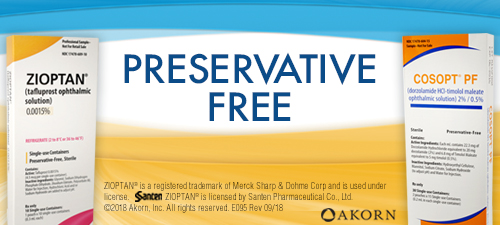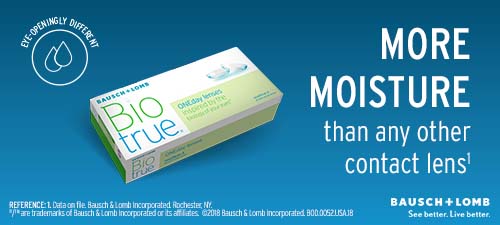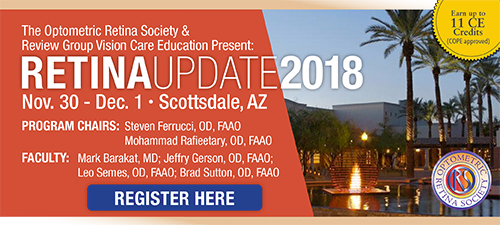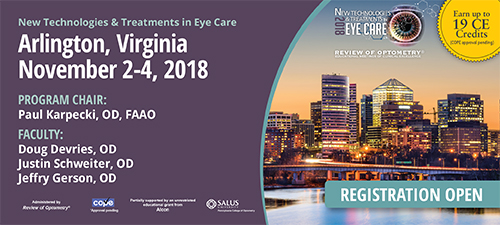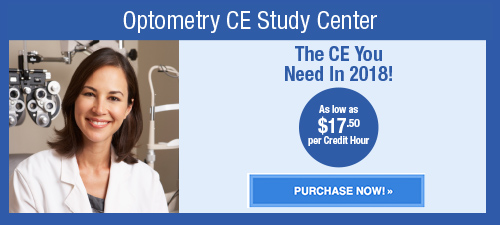
A
weekly e-journal by Art Epstein, OD, FAAO
Off the Cuff: Hubble and the FTC: A Game of Chicken or Just Plain Chicken?
At this point, it’s pretty obvious that Hubble Contacts doesn’t take the FTC or the Contact Lens Rule seriously. It also doesn’t seem to understand that contact lenses are medical devices, regulated by the US FDA. Or maybe Hubble just doesn’t care about the FTC or the FDA.
|
|||||
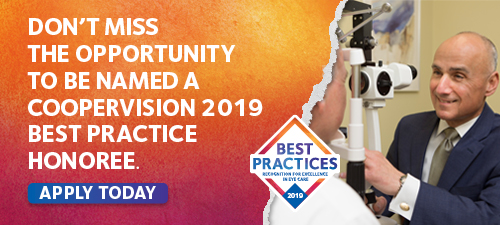 |
||
| Anterior Segment Optical Coherence Tomography Angiography to Evaluate the Peripheral Fitting of Scleral Contact Lenses | ||||
The aim of this study was to show the potential applicability of optical coherence tomography angiography (OCTA) for the evaluation of the peripheral fitting of fully scleral contact lenses.
A pilot study was proposed fitting three different scleral contact lenses (Irregular Corneal Design [ICD]) with different sagittal heights (4,200mm, 4,800mm and 5,600mm) in a healthy volunteer of 27 years old. Researchers evaluated by means of optical coherence tomography (OCT, DRI Triton) the apical clearance achieved with each of the three lenses fitted. The impact over scleral flow was assessed with the OCTA module of the same device.
The apical clearance was 310µm, 901µm and 1,680µm with the scleral lenses of sagittal heights 4,200µm, 4,800µm and 5,600µm, respectively. With OCTA, researchers evaluated the impact of the lens bearing on the conjunctival vascular flow, observing an area of vascular interruption of 0%, 25% and 75% with the lenses of 4,200µm, 4,800µm, and 5,600µm of sagittal heights, respectively. The vascular interruption was induced in the perilimbar area, suggesting the need for readjusting the limbal clearance zone of the lens. Researchers wrote that fully scleral contact lens fitting might be optimized with the use of OCTA, allowing the practitioner to perform the fitting with better control of the peripheral bearing of the lens on the conjunctival tissue, and assess the impact on vascular structures. They added that this potential use of OCTA must be investigated further in future studies including large samples of eyes. |
||||
SOURCE: Gimenez-Sanchis I, Palacios-Carmen B, García-Garrigós A, et al. Anterior segment optical coherence tomography angiography to evaluate the peripheral fitting of scleral contact lenses. Clin Optom (Auckl). 2018;10:103-108. |
||||
|
|||
| Intraocular Photobonding to Enable Accommodating Intraocular Lens Function | ||||
Accommodating intraocular lenses (A-IOLs) require capturing the ciliary muscle forces. Prior work has demonstrated strong photo-initiated bonding between strips of capsular bag and poly(2-hydroxyethyl methacrylate); (pHEMA) polymer in an extraocular setting.
Investigators demonstrated that photobonding can be achieved intraocularly. Phacoemulsification was performed in porcine eyes (<24 hours postmortem). A commercial intraocular lens (IOL; pHEMA-MMA material) was inserted in the capsular bag. Surface contact between the lens and capsular bag was ensured by continuous air infusion into the anterior chamber of the eye, which provided sufficient pressure at the interface, as well as oxygen. The capsular bag and IOL then were stained with a 0.1% photosensitizer Rose Bengal (RB) solution. A fiberoptic probe connected to a diode-laser (532 nm) was used to locally irradiate the capsular bag-IOL interface intraocularly. The bonding breaking load was evaluated in a uniaxial stretcher. Photobonding occurred in the 0.8W/cm2 to 1.6W/cm2 irradiance range and 2.5 minutes to 7 minutes irradiation time. Average forces of 0.12N stretched but did not break the bond. These forces, applied uniaxially, were higher than the summed net accommodating force of the ciliary muscle along the entire equator (0.08N). In two cases, the zonulae broke before the bonded region. Investigators found that photobonding between the capsular bag and IOL polymer could be achieved intraocularly, in a procedure compatible with standard cataract surgery. This technique could enable the mechanisms of A-IOLs not to rely on capsular bag integrity or natural haptic fibrosis. They added that intraocular photobonding held promise to enable operation of A-IOLs to restore accommodation in presbyopia, affecting 100% of the population >45 years old. Furthermore, they wrote, intraocular bonding of polymer material to ocular tissue also might find other applications in ophthalmology. |
||||
SOURCE: Alejandre-Alba N, Gutierrez-Contreras R, Dorronsoro C, et al. Intraocular photobonding to enable accommodating intraocular lens function. Transl Vis Sci Technol. 2018;7(5):27. |
||||
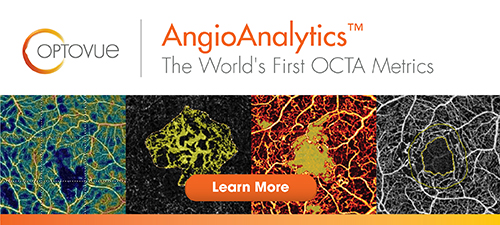 |
||
| Visual Performance of Myopia Control Soft Contact Lenses in Non-presbyopic Myopes | ||||
In a double-blind, randomized, crossover trial, 30 non-presbyopic myopes wore MiSight, center-distance Proclear Multifocal (+2.00D add), and two prototype lenses for one week each to compare the visual performance of soft contact lenses reported to reduce myopia progression.
High- and low-contrast visual acuities at 6m, and 70cm and 40cm; stereopsis at 40cm; accommodative facility at 33cm; and horizontal phoria at 3m and 33cm were measured after one week. Subjective performance was assessed on a numeric rating scale for vision clarity, lack of ghosting, vision stability, haloes, overall vision satisfaction and ocular comfort. Frequency of eye strain symptoms and willingness to purchase lenses were also reported with categorical responses.
Participants reported wearing times (total and visually acceptable). Linear mixed models and chi-square tests were employed in analysis with level of significance set at 5%. Theoretical optical performance of all lenses was assessed with schematic myopic model eyes (-1.00D, -3.00D and -6.00D) by comparing the slope of the edge spread function (ESF), an indicator for optical performance/resolution and the blur patch size of the line spread function, an indicator for contrast, between the lenses. Researchers determined that Proclear Multifocal and MiSight provided the best distance acuities. However, the prototype lenses were rated significantly higher for many subjective variables, and there were no subjective variables where commercial lenses were rated significantly higher than the prototypes. Theoretical optical performance showed steeper slopes of the ESF and greater blur patch sizes of the LSP with commercial lenses, supporting the clinical findings of better visual acuities but reduced subjective performance. Participants wore prototypes longer and reported their vision was acceptable for longer each day compared with MiSight. Both prototypes had the highest willingness-to-purchase rate. Researchers concluded that the prototypes were better tolerated by myopes compared with the commercial soft contact lenses currently used for slowing myopia progression. |
||||
SOURCE: Sha J, Tilia D, Diec J, et al. Visual performance of myopia control soft contact lenses in non-presbyopic myopes. Clin Optom (Auckl). 2018 Jul 25;10:75-86. |
||||
|
|||
| News & Notes | |||||||||||||||||||||||||||||
Registration Open for International Sports Vision Association Annual Conference
|
|||||||||||||||||||||||||||||
| Academy Makes Donation in Honor of Brien Holden Humanitarian Awardee The American Academy of Optometry made a $5,000 donation to Fuji Vision Aid Mission in honor of Akio Kanai, OD, the 2018 recipient of the Brien Holden Humanitarian Award. The funds will help provide patient care to overseas refugees. Dr. Kanai, who will be honored at the Academy 2018 San Antonio Awards Ceremony on Nov. 9, was recognized for his partnership with the Office of the United Nations High Commissioner for Refugees. Since 1984, Dr. Kanai has been active in advocacy for access to eye care and in providing direct care to more than 100,000 refugees in Thailand, Nepal, Armenia, Azerbaijan, and most recently, to the displaced Rohingya. |
|||||||||||||||||||||||||||||
| OWL to Host Signature Event and Awards Ceremony at AAO 2018 OWL: Advancing Diversity in Leadership will host its annual OWL Signature Event and Awards Ceremony at the American Academy of Ophthalmology annual meeting on Oct. 28, from 5:30 p.m. to 7:00 p.m., at Revel Motor Row in Chicago. Attendees will hear a discussion of “Perspectives on International Leadership” from Robert Dempsey, group vice president and head of global ophthalmics franchise for Shire and Dr. Aylin Kilic, refractive & cataract surgeon and associate professor of ophthalmology at Medipol University, Istanbul. The pair will be interviewed by Michael Onuscheck, president and general manager of Alcon’s Global Surgical Franchise. A premier sponsorship was provided by Alcon, and support was also received from major sponsors CorneaGen, Provident, Oyster Point Pharma, Ellex and Regeneron. Read more. |
|||||||||||||||||||||||||||||
| J&J Vision Appoints Dr. Alexander as Head, North America Vision Care Professional Relations Carol Alexander, OD, was named Head, North America Vision Care Professional Relations for Johnson & Johnson Vision. Prior to joining, Dr. Alexander led her own private practice for over 20 years, and she has been recognized by the American Optometric Association as the Young OD of the Year, and by the state of Ohio as the Optometrist of the Year. She has served on many AOA committees including as chair of the Commission on Quality Assessment and Improvement and is a past president of the Ohio Optometric Association. Carol holds her OD from The Ohio State University College of Optometry. |
|||||||||||||||||||||||||||||
| Precision Vision Launches Chart for Measuring Contrast Sensitivity Precision Vision announced the availability of CamBlobs, a self-administered contrast sensitivity test for assessment and continued monitoring of various retinopathies that result in progressive visual impairment. The CamBlobs test chart consists of 24 rows of four rectangles on a printed page. Each rectangle contains a gray disc (or “blob”) positioned randomly within it. Blobs become increasingly fainter moving down the page. Patients mark the position of as many of the blobs as they can. The test is scored using a transparent overlay. Learn more. |
|||||||||||||||||||||||||||||
| Oculus Keratograph 5M Features New Joystick With Release Function The Oculus Keratograph 5M, now equipped with a joystick and release function, enables the user to capture images and video sequences with the push of a button, without the need to switch to the mouse. The wireless joystick communicates with the Keratograph software via Bluetooth. A power supply cabling configuration inside the xy-base facilitates the retrofitting of existing systems. Read more. |
|||||||||||||||||||||||||||||
| FDA Approves EyePoint’s YUTIQ (fluocinolone acetonide intravitreal implant) 0.18 mg EyePoint Pharmaceuticals announced that the FDA approved YUTIQ (fluocinolone acetonide intravitreal implant) for the treatment of chronic non-infectious uveitis affecting the posterior segment. YUTIQ is a non-bioerodible intravitreal microinsert in a drug delivery system containing 0.18 mg fluocinolone acetonide, designed to release consistently over 36 months. It is supplied in a sterile, single-dose preloaded applicator that can be administered in the physician's office. Read more. |
|||||||||||||||||||||||||||||
|
|||||||||||||||||||||||||||||
|
Optometric Physician™ (OP) newsletter is owned and published by Dr. Arthur Epstein. It is distributed by the Review Group, a Division of Jobson Medical Information LLC (JMI), 11 Campus Boulevard, Newtown Square, PA 19073. HOW TO ADVERTISE |


